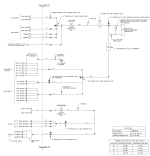@Brant There was a previous discussion on turnover. No body focuses on that as there are only several reasons to run your pump.
1. to produce chlorine from the SWCG - most of us run the majority of the pump time at 1200 to 1700rpm (max 30gpm or depending on plumbing setup). You need to find the minimum RPM to activate the flow switch in the SWCG then add 200rpm to account for filter getting dirty or any other increase in back pressure to the system. This RPM needed to activate the SWCG will become your minimum pump speed for Pool Mode. I have mine set to run at 1500rpm for 24 hrs a day.
2. skim the pool - some set the min RPM to both activate the SWCG and skim, others may run at a slightly higher RPM for some duration of time to have better skimming action - again dependent on how the plumbing is set up i.e head loss. I get adequate skimming action at 1500rpm
3. Mixing of chemicals - don't always need to increase pump speed for mixing but some do. Mine mixes fine at 1500rpm.
4. Cleaning the pool - for those with either a suction side or a pressure side cleaner, you will set the schedule to operate those as needed and normally requires a higher RPM then for items 1 thru 3). I have to ramp mine up to 2600rpm for my pressure side pool cleaner. Right now it only runs 2x a week. In summer it is about the same or less Only Fall/Winter does it run more times during the week.
5. Run spillover mode to refresh the spa - this does not need to increase pump RPM.





